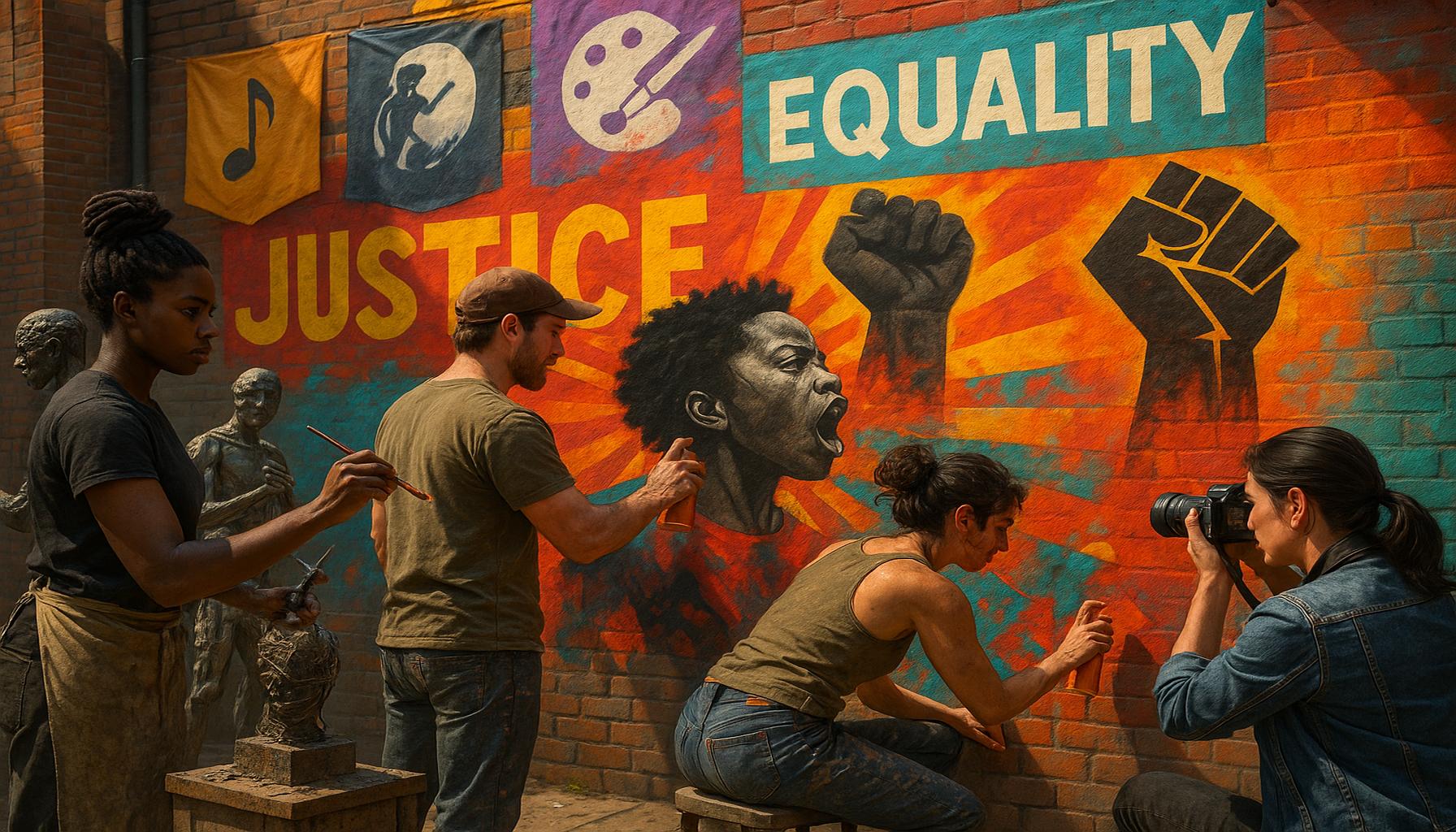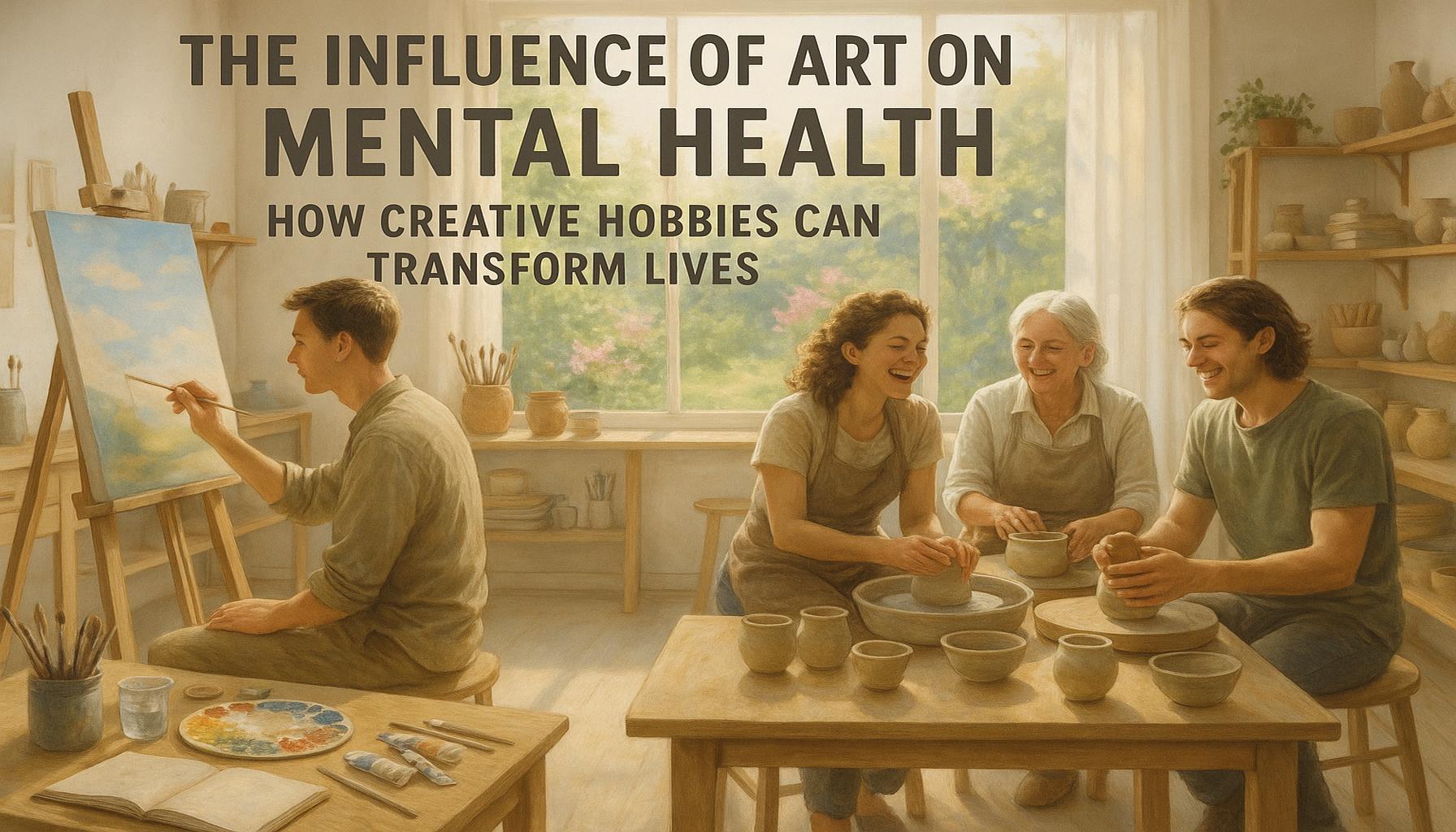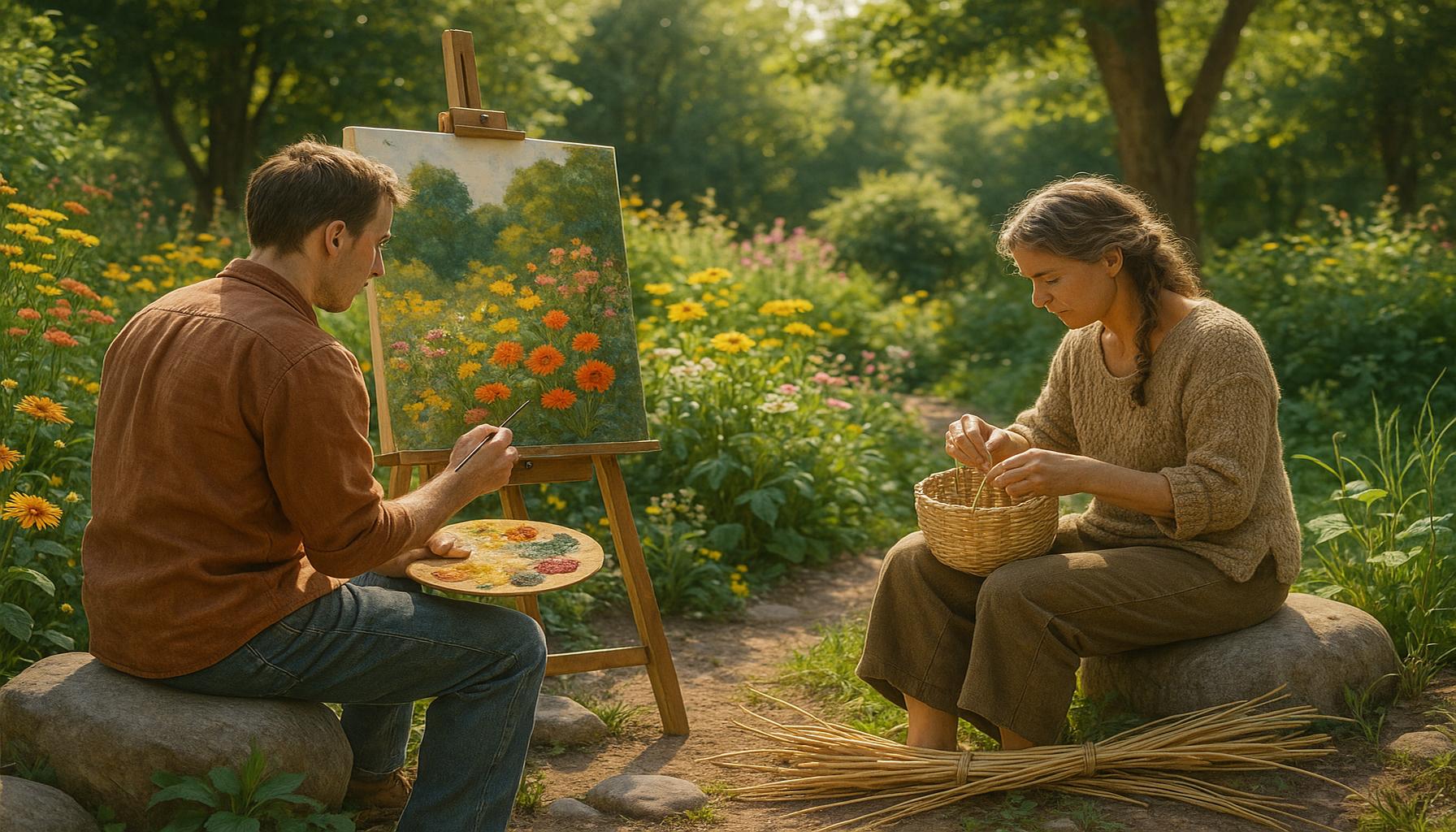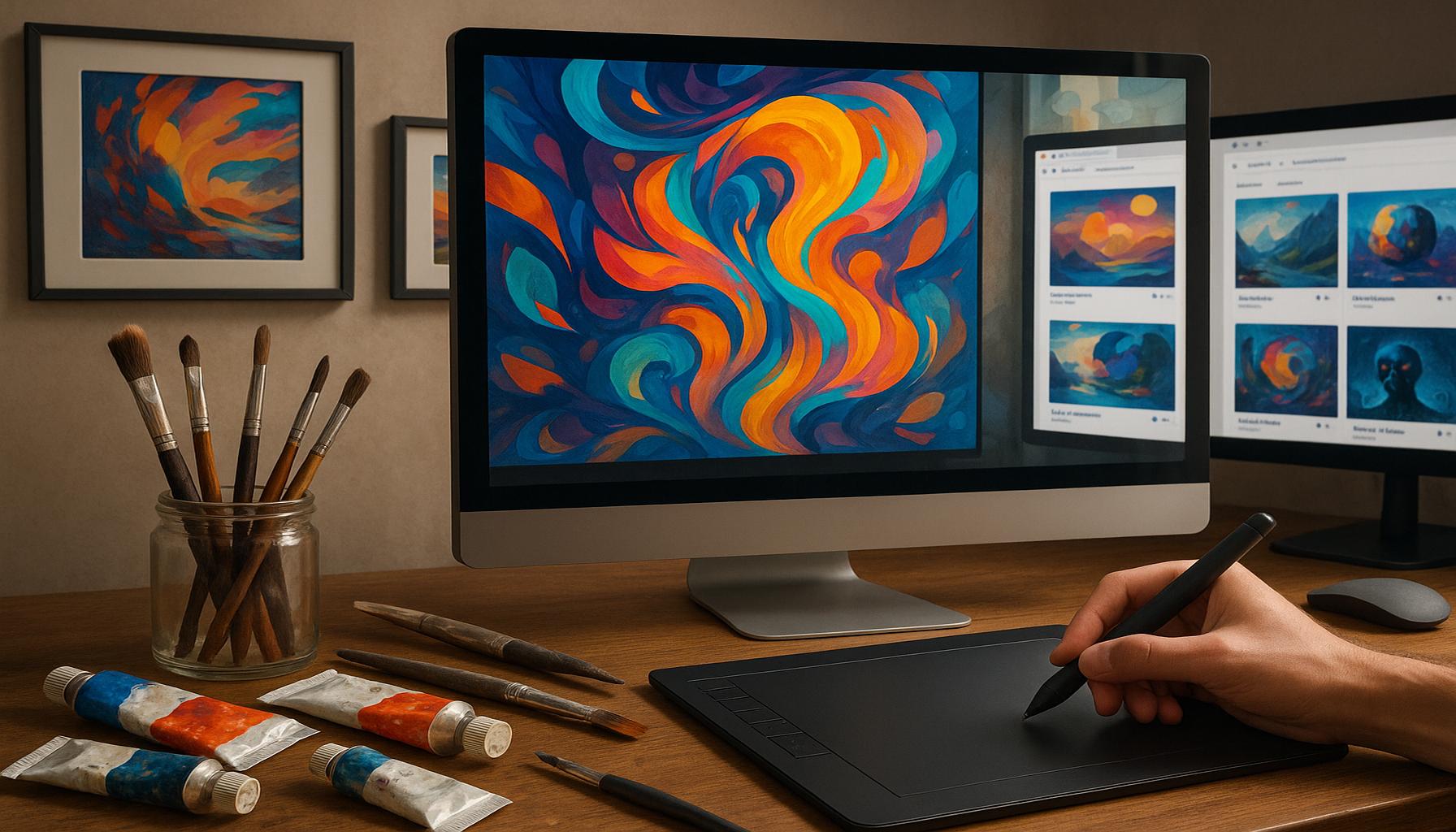Artistic Hobbies as a Form of Activism: Expressing Social Causes Through Creativity

Artistic Expression as a Catalyst for Societal Transformations
In today’s society, where social movements are gaining momentum and visibility, the role of artistic hobbies has evolved into a potent vehicle for activism. Through various creative expressions—whether visual art, music, dance, or performance—individuals are harnessing their talents to communicate vital messages and champion social causes. This fusion of creativity and advocacy provides a powerful medium to engage audiences, inspire action, and create a meaningful dialogue surrounding pressing issues.
The use of art to support social causes can be observed across various domains. For instance, in the realm of environmental protection, artists are not just creating beauty but also elevating awareness regarding climate change. Works such as Olafur Eliasson’s “Ice Watch,” which features massive blocks of glacial ice displayed in urban settings, serve as poignant reminders of the melting polar ice and our role in climate change. This form of interplay between art and activism challenges audiences to rethink their perceptions of nature and sustainability.
Similarly, in the field of social justice, artists are playing a crucial role in advocating for racial and gender equality. The murals that adorn city streets often tell the stories of marginalized communities, empowering voices that have been historically silenced. For example, the Black Lives Matter mural painted in Washington, D.C., not only beautifies the city but also stands as a bold statement seeking justice and reform in the face of systemic racism. Such artistic endeavors encourage public engagement and bring light to critical issues, prompting citizens to reflect and act.
Mental health awareness is another significant area where art serves as a powerful tool for activism. The graphic novel format has become an especially poignant medium for sharing personal narratives surrounding mental health, compelling readers to confront difficult topics. Works like “Marbles” by Ellen Forney delve into the complexities of living with bipolar disorder, fostering empathy and understanding while breaking down stigmas. Through such stories, creators invite audiences into a conversation that is often shrouded in silence.
The convergence of creativity and activism not only sparks community engagement but also cultivates an environment for individuals to explore their voices and challenge societal norms. Art possesses the unique ability to transcend language and cultural barriers, uniting diverse groups around shared experiences and common goals. This encourages individuals to take a stand and express their beliefs, thereby contributing to a collective movement aimed at creating a better society.
As you explore the captivating interplay of artistic hobbies as activism, consider the countless ways in which creativity can ignite change. Each brushstroke, lyric, or performance can resonate profoundly, reaching audiences far beyond the artist’s original intent. By embracing artistic hobbies, individuals not only articulate their convictions but also play a pivotal role in fostering a society that is more inclusive, aware, and responsive to pressing societal challenges.
DIVE DEEPER: Click here to discover your unique writing voice
Artistic Hobbies: The Creative Pulse of Activism
Artistic hobbies operate at the intersection of creativity and activism, offering a rich tapestry woven with personal experiences, cultural commentary, and social critiques. As more individuals turn to creative outlets not only for self-expression but also for convening impactful dialogues, the potential for fostering societal change becomes ever more pronounced. From grassroots movements to international campaigns, artistic endeavors empower voices that might otherwise remain unheard.
Across the United States, various artistic forms—such as visual art, music, theater, and literature—have been harnessed to address critical issues and ignite public discourse. For instance, in recent years, the proliferation of street art has offered a canvas for political expression. Artists like Shepard Fairey, known for his “Hope” poster during Barack Obama’s 2008 campaign, have elevated street art to a rallying cry, using familiar imagery to engage communities and inspire political participation.
This vivid blend of creativity and activism has given rise to various movements, which can be categorized as follows:
- Environmental Activism: Artists utilize their crafts to spotlight the importance of sustainability and climate justice. Projects like “The Great Wall of Los Angeles,” a half-mile-long mural depicting California’s history, also addresses issues such as environmental degradation and social injustices.
- Human Rights: Performance art and theater have long been tools for raising awareness about human rights violations. Notable performers, such as the group “Theatre of the Oppressed,” create interactive experiences that allow audiences to confront social issues actively.
- Community Building: Many artistic initiatives foster community engagement, bringing together individuals from diverse backgrounds. Public workshops, community mural projects, and open mic nights not only allow for artistic expression but also galvanize collective action towards local issues.
The significance of artistic hobbies in the realm of activism is underscored by their ability to challenge the status quo and bring about introspection. For instance, the “Women’s March” in various cities across the country saw participants donning creative attire ranging from hand-painted protest signs to elaborate costumes, all designed to convey messages of equality and empowerment. Such artistic expressions draw attention to the cause, inviting others to join the conversation.
Moreover, the digital age has amplified these artistic endeavors, allowing for greater accessibility and reach. Platforms like Instagram and TikTok have become vital tools for artists to share their work and message far beyond physical boundaries, attracting an audience that spans across generations and geography. This phenomenon showcases how artistic hobbies can catalyze immediate and widespread outreach, granting individuals the ability to influence public opinion and activate change.
As the dialogue around social causes becomes increasingly urgent, it is essential to recognize the role of art as a precursor to action. Artistic hobbies as a form of activism create a space where creativity thrives and social issues are addressed, inviting all to engage in the collective pursuit of justice and a better future. The exploration of these themes—interwoven with personal narratives and cultural observations—continues to inspire new waves of artistic expression aimed at effecting change.
| Advantage | Description |
|---|---|
| Empowerment | Artistic hobbies create a platform for individuals to voice their concerns and advocate for change. Creative expression allows artists to address urgent social issues, fostering a sense of empowerment in themselves and their communities. |
| Awareness Raising | Through creativity, artists can attract attention to their causes. Whether it’s through street art, poetry, or performance, artistic work can engage diverse audiences and provoke thought, encouraging others to take action. |
Engaging in **artistic hobbies** not only nurtures personal creativity but also serves as a vital medium for **activism**. Every brushstroke, every note played, or every dance performed can transmit powerful messages that resonate widely. The dual power of art and activism is particularly prominent in movements for social justice, environmental awareness, and political change. As artists harness their creativity, they often invite collaboration, sparking community dialogues around pressing issues. Consider the impactful use of graffiti in urban settings—transforming neglected spaces into canvases for social change. Artists use their talents to not only beautify their surroundings but also to confront and challenge societal norms. Such expressions can inspire reflection and dialogues that might otherwise remain unspoken. In this landscape, the intersection between art and activism becomes a rich canvas for innovation, allowing creatives to push boundaries and expand collective consciousness. When individuals engage in such artistic endeavors, they not only enhance their expression but also contribute to a broader narrative that seeks positive social change.
DIVE DEEPER: Click here to discover the therapeutic power of creativity
The Power of Collaboration in Artistic Activism
The impact of artistic hobbies extends far beyond individual expression; they often flourish in collaborative environments where diverse voices unite to explore common causes. Collaborative art projects serve as a medium through which people can combine their skills and perspectives, ultimately amplifying their message. One notable example is the “#MeToo” movement, where artists and activists joined forces to create powerful installations that tell stories of survival and resilience. This movement transformed personal narrative into collective experience, mobilizing communities to confront pervasive issues of sexual harassment and assault.
Artistic collaboration can also extend into multi-disciplinary approaches, inviting professionals from different sectors—such as social workers, educators, and activists—to lend their expertise to creative endeavors. For instance, community art centers across the United States often host workshops that merge art with social justice education, teaching participants not only the techniques of their chosen medium but also how to use art as a tool for advocacy. Projects like “Art from the Heart” host collaborative workshops where participants create pieces reflecting mental health awareness and stigma, encouraging open discussions about mental health issues.
The integration of artistic hobbies with activism does not shy away from technology either. The advent of digital art and online platforms has transformed activism, enabling artists to innovate and share their messages globally. The digital mural project “Save Our Planet” utilizes augmented reality to engage users in environmental issues, allowing them to interact with art that raises awareness of climate change. This kind of innovative outreach, combined with social media campaigns, illustrates how technology empowers artistic activism to reach larger audiences and appreciates the collaborative nature of creative expression.
Another striking example of collaboration is the creation of artivism festivals, which bring together artists, musicians, and performers to highlight social issues through collective artistic expression. Events like the “Los Angeles Arts Festival” create immersive experiences where attendees can engage with art that reflects social justice themes, creating a shared space for dialogue and action. In such festivals, attendees not only witness artistic expression but become part of an inclusive narrative that values diversity and seeks change.
The role of community organizers is also crucial in harnessing the power of artistic hobbies for activism. By facilitating connections among artists and activists, organizers can create networks that enhance the reach of their initiatives. For instance, initiatives like “Artivism Now!” connect emerging artists with seasoned activists, fostering mentorship and collaboration within artistic communities. Such partnerships not only nurture creativity but provide crucial support systems for tackling complex social issues.
As exploration of artistic hobbies broadens, it is essential to underscore the transformative power of art in shaping identities and building movements. Artistic expression serves as a catalyst for meaningful conversations and mobilization, illustrating that the act of creation is, in itself, a form of resistance. Whether focusing on human rights, environmental concerns, or mental health awareness, the intersection of art and activism fosters a deep sense of connection and responsibility among individuals striving for societal change.
DISCOVER MORE: Click here to delve into the evolution of digital photography
Conclusion: The Resounding Echo of Creativity as Activism
As we delve into the multifaceted landscape where artistic hobbies intersect with activism, it becomes clear that creativity is not merely a form of self-expression; it is a powerful vehicle for societal change. Through diverse mediums, from painting to digital art, individuals and communities harness their artistic talents to convey profound messages about social justice, mental health, environmental advocacy, and human rights. The collaborative nature of these endeavors amplifies their impact, creating dialogues that resonate across varied audiences and bridging gaps between different societal factions.
The rise of initiatives like artivism festivals and community workshops underscores the importance of collaboration, as artists and activists join forces to craft immersive experiences that foster understanding and engagement. The utilization of technology further extends the reach of these movements, enabling impactful narratives to gain international traction and sparking conversations that transcend geographical and cultural boundaries. This dynamic intersection not only highlights the creativity within activism but also emphasizes our collective responsibility to use our voices and talents for progress.
Ultimately, the engagement with art as activism invites everyone to reconsider their own roles in societal transformations. Each brushstroke or keystroke contributes to a narrative that demands attention and fosters change, reinforcing the idea that creativity is an essential tool for empowerment. As we celebrate artistic expression’s role in shaping movements, we acknowledge that art is not merely an aesthetic pursuit—it is a clarion call for justice, understanding, and compassion that echoes through time and inspires future generations to take action.


